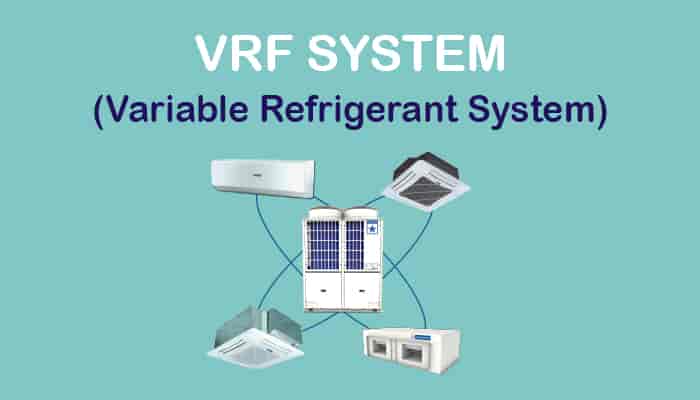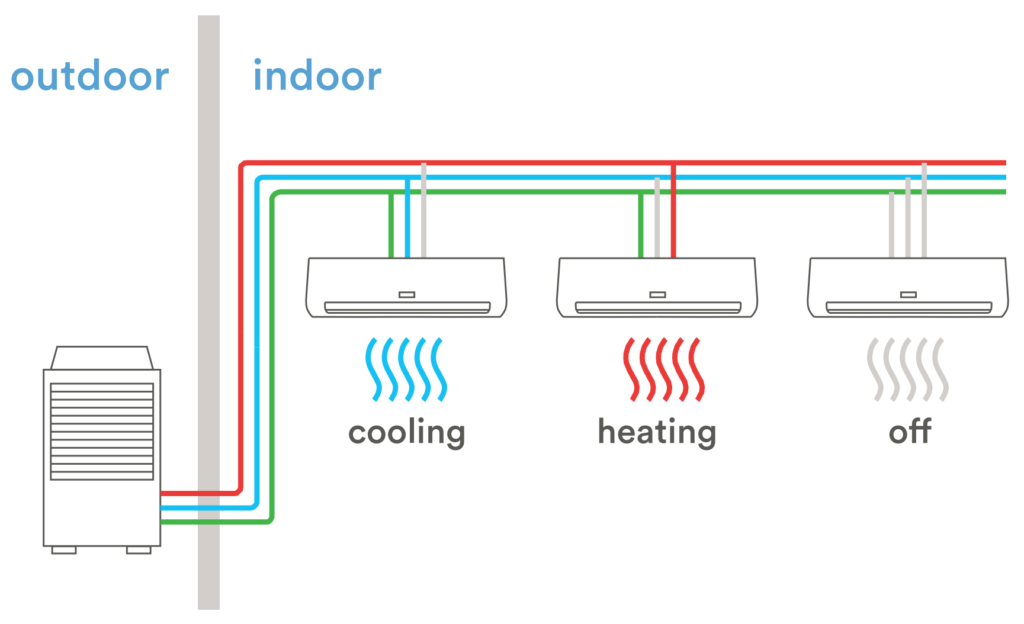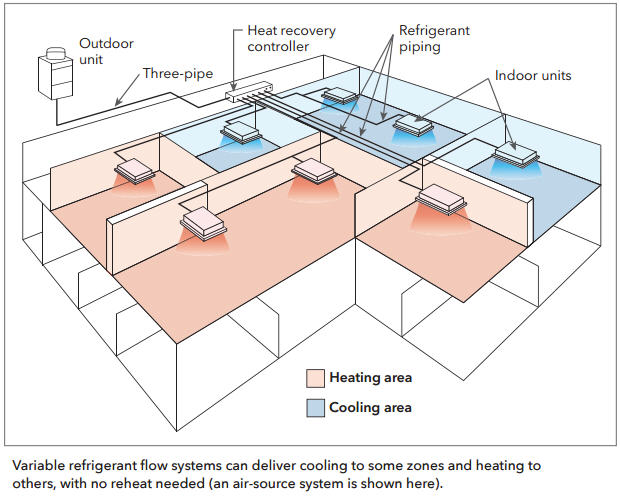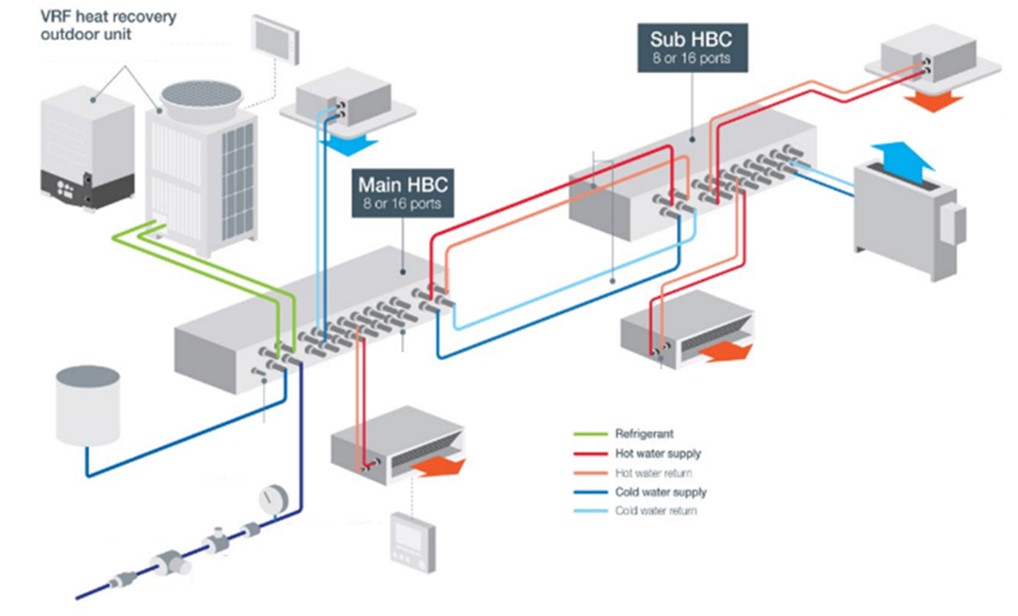What Is Variable Refrigerant Flow System

Heating and cooling costs can represent a significant portion of your home or business's energy expenses. Thankfully, innovative technologies are emerging to address these concerns. One such solution gaining traction is the Variable Refrigerant Flow (VRF) system. This article provides a comprehensive overview of VRF technology, its benefits, and how it can contribute to energy savings, making it an excellent choice for both residential and commercial applications.
Understanding Variable Refrigerant Flow (VRF) Systems
At its core, a Variable Refrigerant Flow (VRF) system is an advanced type of heat pump technology that allows for precise temperature control in individual zones or rooms. Unlike traditional HVAC systems that deliver a constant flow of air or refrigerant, VRF systems modulate the flow of refrigerant to each zone based on its specific heating or cooling needs. This allows for simultaneous heating and cooling in different zones, offering unparalleled flexibility and energy efficiency.
How VRF Works: The Technical Breakdown
VRF systems typically consist of an outdoor condensing unit and multiple indoor units. The outdoor unit contains the compressor and heat exchanger, while the indoor units, often ductless mini-splits or ducted air handlers, distribute the conditioned air to individual zones. The key to VRF's efficiency lies in its ability to vary the refrigerant flow rate based on demand. Sophisticated controls and sensors continuously monitor the temperature in each zone and adjust the refrigerant flow accordingly. This ensures that only the necessary amount of heating or cooling is delivered, minimizing energy waste.
"VRF systems are revolutionizing HVAC by offering personalized climate control and significant energy savings. It’s not just about comfort; it's about sustainability." - Energy Efficiency Experts Association
Types of VRF Systems
There are primarily two types of VRF systems:
- Heat Pump VRF: These systems can either heat or cool a space but cannot do both simultaneously in different zones. They are a good option for buildings where heating and cooling needs are relatively uniform.
- Heat Recovery VRF: These more advanced systems can simultaneously heat some zones while cooling others. They recover waste heat from cooling zones and redirect it to heating zones, maximizing energy efficiency. This is ideal for buildings with varying heating and cooling demands throughout the day, such as offices with sun-exposed and shaded areas.
Benefits of VRF Systems: Beyond Temperature Control
The advantages of VRF systems extend far beyond just individualized temperature settings. They offer a wide range of benefits that make them a compelling alternative to traditional HVAC systems.
Energy Efficiency and Cost Savings
VRF systems are significantly more energy-efficient than traditional HVAC systems. By only delivering the precise amount of heating or cooling needed, they minimize energy waste and lower utility bills. Studies have shown that VRF systems can reduce energy consumption by up to 40% compared to conventional systems. The initial investment in a VRF system may be higher, but the long-term cost savings can be substantial, leading to a positive Return on Investment (ROI).
Furthermore, many states and utility companies offer rebates and incentives for installing energy-efficient HVAC equipment like VRF systems. Check with your local utility provider or state energy office to see what programs are available in your area.
Zoned Comfort and Personalized Climate Control
VRF systems excel at providing zoned comfort. Each indoor unit operates independently, allowing occupants to set their preferred temperature in their individual zone. This eliminates the common problem of temperature imbalances in buildings with traditional HVAC systems. Whether it's an office building with varying occupancy levels or a home with different heating and cooling preferences, VRF systems offer unparalleled personalized climate control.
Quiet Operation
VRF systems are known for their quiet operation. The outdoor units are typically equipped with noise-reducing technologies, and the indoor units operate at low sound levels. This makes them ideal for environments where noise is a concern, such as offices, libraries, and residential buildings.
Space Savings
VRF systems often require less space than traditional HVAC systems. They eliminate the need for bulky ductwork, freeing up valuable space in buildings. The compact design of the indoor and outdoor units also makes them easier to install and maintain.
Long Lifespan and Reliability
VRF systems are built to last. They are typically made with high-quality components and designed for long-term reliability. With proper maintenance, a VRF system can last for 15-20 years or more, providing years of reliable and energy-efficient performance.
Smart Home Integration: VRF and the Internet of Things (IoT)
VRF systems are increasingly integrated with smart home technology, further enhancing their functionality and energy efficiency. Smart thermostats and sensors can be connected to VRF systems, allowing for remote monitoring and control, automated scheduling, and advanced energy management features.
Smart Thermostats and Remote Control
Smart thermostats allow you to control your VRF system from anywhere using your smartphone or tablet. You can adjust the temperature, set schedules, and monitor energy consumption remotely. This is particularly useful for homeowners who want to optimize energy usage while they are away from home or for businesses that want to manage their HVAC systems across multiple locations.
Energy Monitoring and Reporting
Many VRF systems come with built-in energy monitoring capabilities. You can track your energy consumption in real-time and identify areas where you can further reduce energy waste. Some systems also provide detailed reports that can help you understand your energy usage patterns and make informed decisions about energy management.
Integration with Building Management Systems (BMS)
For larger commercial buildings, VRF systems can be integrated with building management systems (BMS). This allows for centralized control and monitoring of all building systems, including HVAC, lighting, and security. BMS integration can further optimize energy efficiency and improve building performance.
Is VRF Right for You? Factors to Consider
While VRF systems offer numerous advantages, they may not be the best fit for every application. Here are some factors to consider when deciding whether a VRF system is right for you:
Building Size and Layout
VRF systems are well-suited for buildings with multiple zones or rooms that require individual temperature control. They are particularly effective in buildings with varying heating and cooling demands throughout the day. Smaller homes with relatively uniform heating and cooling needs may not benefit as much from the zoned control capabilities of VRF systems.
Climate
VRF systems are effective in a wide range of climates. However, they may be less efficient in extremely cold climates where supplemental heating may be required. Consider the climate in your area and consult with an HVAC professional to determine if a VRF system is the best option for your needs.
Budget
The initial investment in a VRF system can be higher than that of a traditional HVAC system. However, the long-term cost savings from reduced energy consumption can offset the higher upfront cost. Consider your budget and long-term energy savings goals when making your decision. Factor in potential rebates and incentives as well.
Installation and Maintenance
VRF systems require specialized installation and maintenance. It is important to hire a qualified HVAC contractor with experience in VRF systems to ensure proper installation and ongoing maintenance. Regular maintenance, such as cleaning filters and inspecting refrigerant levels, is essential to ensure optimal performance and longevity.
Getting Started: Finding the Right VRF System
If you're considering a VRF system, the next step is to find the right system for your needs. Here are some tips to help you get started:
Consult with an HVAC Professional
The best way to determine if a VRF system is right for you is to consult with a qualified HVAC professional. They can assess your building's heating and cooling needs, evaluate your budget, and recommend the best VRF system for your specific requirements. Look for contractors with experience in VRF system design, installation, and maintenance.
Research Different Brands and Models
There are many different brands and models of VRF systems available on the market. Research different options and compare their features, performance, and warranty. Consider factors such as energy efficiency ratings (SEER, EER, HSPF), noise levels, and smart home integration capabilities. Energy Star is a great resource for identifying energy-efficient models.
Get Multiple Quotes
Obtain quotes from multiple HVAC contractors before making a decision. This will allow you to compare prices and services and ensure that you are getting the best value for your money. Be sure to ask for detailed quotes that include all costs associated with the installation, including equipment, labor, and any necessary permits.
Consider Long-Term Costs
While the initial cost of a VRF system is important, it's also essential to consider the long-term costs. Factor in potential energy savings, maintenance costs, and the lifespan of the system. A higher-priced system that is more energy-efficient and reliable may be a better investment in the long run.
The Future of HVAC: VRF and Sustainable Solutions
VRF systems represent a significant advancement in HVAC technology, offering a sustainable and energy-efficient solution for heating and cooling buildings. As energy costs continue to rise and environmental concerns become more pressing, VRF systems are poised to play an increasingly important role in the future of HVAC. With their ability to provide personalized comfort, reduce energy consumption, and integrate with smart home technology, VRF systems are a smart investment for both homeowners and businesses looking to create a more comfortable, efficient, and sustainable environment.










